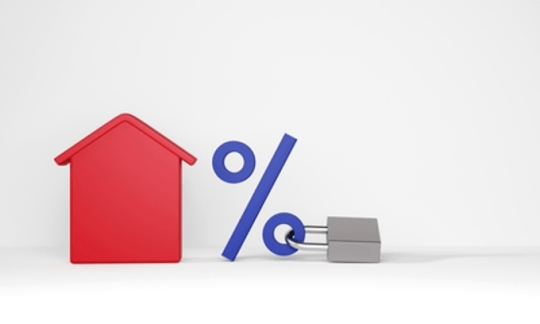Cheap fixed rate home loans: Is it a good time to lock in?

There are some very competitive fixed-rate loans on the market but should you be locking in now? Here’s what to consider.
It was this time last year that the Reserve Bank of Australia (RBA) increased the cash rate for the first time since 2010. There was a pause in April but the RBA took its foot off the brake in May lifting the cash rate by 0.25 percentage points to 3.85%. According to Canstar, the latest rate rise means borrowers with a $500,000 mortgage over 30 years will see their repayments increase by $82 a month. That means they will be paying about $1,133 more per month on their repayments than they were in April 2022 before the first rate hike.
On a positive note, this may be the last rate rise we will see in a while. At this stage, the major banks are not expecting any further increases.
Interestingly, 33 lenders cut their owner-occupier fixed rates in April across a range of terms. The average decrease ranges from 0.34% to 0.47% depending on the term (see table).
Average decrease in owner-occupier fixed home loan rates over April 2023
← Mobile/tablet users, scroll sideways to view full table →
| Term | Average decrease |
|---|---|
| 1 year | -0.34% |
| 2 year | -0.38% |
| 3 year | -0.39% |
| 4 year | -0.44% |
| 5 year | -0.47% |
Source: www.canstar.com.au – 28/04/2023. Based on owner occupier fixed loans on Canstar’s database, available for any loan amount, any LVR and P&I repayments; excluding first home buyer only and other special condition loans.
Cheapest fixed home loan rates
There are now some very competitive fixed rates on offer. As you can see from the tables below, it is possible to lock in a rate as low as 4.99% for three years – this is 1.15 percentage points lower than the current average variable rate of 6.14%. It’s also not that much higher than the lowest variable rate loans currently on offer.
The cheapest fixed rates on other terms may be higher than the cheapest three-year fixed rate but they are still lower than the current average variable rate. Someone switching from a loan charging 6.14% could potentially reduce their repayments by between $160 and $303 a month by switching to the cheapest fixed-rate loans currently available.
Top lowest home loan rates (any LVR)
← Mobile/tablet users, scroll sideways to view full table →
| Company | Name | Max LVR | Rate | Comparison Rate | Monthly Repayment Savings Switching from Average Rate | |
|---|---|---|---|---|---|---|
| Variable | The Mutual Bank | Budget Home Loan Special Variable Rate |
60% | 4.94% | 4.94% | $387 |
| Geelong Bank | 1,2 Home Loan | 60% | 4.94% (reverts to 5.94% after 2 years) | 5.77% | $387 | |
| 1 Year Fixed |
MOVE Bank | Complete Package Fixed | 95% | 5.24% | 6.50% | $160 |
| 2 Year Fixed |
TicToc Home Loans | Live-in Fixed | 90% | 5.29% | 5.13% | $196 |
| AMO Group | Residential Fixed | 80% | 5.29% | 5.22% | $196 | |
| 3 Year Fixed |
The Capricornian | Premium Choice Fixed | 90% | 4.99% | 6.30% | $297 |
| 4 Year Fixed |
ING | Orange Advantage Residential Fixed |
80% | 5.34% | 5.30% | $280 |
| 5 Year Fixed |
Macquarie Bank | Basic Fixed | 70% | 5.35% | 5.34% | $303 |
Source: www.canstar.com.au – 28/04/2023. Based on owner occupier loans on Canstar’s database, available for a loan amount of $500,000, any LVR and principal & interest repayments; excluding first home buyer only and other special condition loans. Lowest rates selected based on rate, and then sorted in ascending order by comparison rate. One product per provider is listed in each category. Comparison rate calculated based on a loan amount of $150,000 and a loan term of 25 years. Monthly repayments do not consider revert rates. Monthly savings based on average rates for 80% LVR loans.
Top lowest home loan rates (80% LVR)
← Mobile/tablet users, scroll sideways to view full table →
| Company | Name | Max LVR | Rate | Comparison Rate | Monthly Repayment Savings Switching from Average Rate | |
|---|---|---|---|---|---|---|
| Variable | Community First Bank | Basic Home Loan Special | 80% | 4.95% | 5.00% | $384 |
| 1 Year Fixed |
MOVE Bank | Complete Package Fixed | 95% | 5.24% | 6.50% | $160 |
| 2 Year Fixed |
TicToc Home Loans | Live-in Fixed | 90% | 5.29% | 5.13% | $196 |
| AMO Group | Residential Fixed | 80% | 5.29% | 5.22% | $196 | |
| 3 Year Fixed |
The Capricornian | Premium Choice Fixed | 90% | 4.99% | 6.30% | $297 |
| 4 Year Fixed |
ING | Orange Advantage Residential Fixed |
80% | 5.34% | 5.30% | $280 |
| 5 Year Fixed |
ING | Orange Advantage Residential Fixed 5 |
80% | 5.44% | 5.35% | $275 |
Source: www.canstar.com.au – 28/04/2023. Based on owner occupier loans on Canstar’s database, available for a loan amount of $500,000, 80% LVR and principal & interest repayments; excluding first home buyer only and other special condition loans. Lowest rates selected based on rate, and then sorted in ascending order by comparison rate. One product per provider is listed in each category. Comparison rate calculated based on a loan amount of $150,000 and a loan term of 25 years. Monthly repayments do not consider revert rates.
Is it a good time to fix your home loan?
Traditionally, you would pay a premium to lock in your home loan rate, meaning you would pay a little more than what the variable rate is. But, as you can see from the table above, a window of opportunity exists to lock in and pay less than what the average variable rate is.
This may be tempting as your repayments could be lower and you’ll have certainty for the fixed rate period. Of course, it can be hard to make the switch from a variable to a fixed rate offer when some experts are predicting rate relief may come as early as this year. Commonwealth Bank is predicting the RBA will reduce the cash rate later this year while ANZ, NAB and Westpac all expect cash rate cuts to come in 2024.
Canstar has crunched the numbers to show how three different options would compare using Commonwealth Bank’s cash rate forecast. This has factored in the May rate hike and assumes the cash rate will drop by 0.50 percentage points in the last quarter of this year and a further 0.50 percentage points in the first half of 2024.
Lowest fixed rate vs lowest variable rate vs average variable rate interest costs
← Mobile/tablet users, scroll sideways to view full table →
| Lowest 3-year Fixed Home Loan | Lowest Variable Rate Home Loan | Average Overall Variable Rate | |
|---|---|---|---|
| Interest Rate | 4.99% | 4.94% | 6.14% |
| Interest Cost Over 3 Years | $73,196 | $65,622 | $83,567 |
Source: www.canstar.com.au – 28/04/2023. Based on owner occupier loans on Canstar’s database, available for a loan amount of $500,000, any LVR and principal & interest repayments; excluding first home buyer only and other special condition loans. Variable Rates assumed to change in line with CBA’s cash rate forecast – +25bps in May-23, -50bps in Q4-23, -50bps in H1-24.
As the table shows, the lowest variable rate would be the cheapest option over three years – costing $65,622 in interest. Locking in the lowest available three-year fixed rate will cost about $7,500 more in interest over three years than the cheapest variable rate but roughly $10,300 less than sticking to a loan at the average variable rate.
Of course, these are forecasts and they aren’t set in stone. If rates increased again in the next three years the numbers could work out very differently.
The end decision rests on your own financial circumstances. Locking in your home loan is not about predicting rate movements but about buying yourself peace of mind knowing that your repayments will remain the same for the fixed term. There are pros and cons for both locking in or opting for a variable rate.
→ Related: The pros and cons of locking in a home loan rate
Tips for locking in your home loan
If you are thinking about locking in part or all of your home loan here are my tips.
- Ask for a rate lock to secure the advertised rate you want – refinancing can take some time and the fixed rate you’re after may increase before your loan is settled.
- Make sure fees that come with refinancing don’t offset the savings that could be on offer by switching to a fixed-rate loan. For example consider any loan discharge or application fees, valuation fees, land registration fees, lenders mortgage insurance and ongoing costs like package loan fees.
- Don’t increase your term if refinancing to a fixed rate as this could extend the length of time it takes to repay the loan and the amount of interest paid over the life of the loan.
- Keep in mind you will have to pay break fees if you want to pay out your fixed-rate loan early and these can be hefty.
- Ask if extra repayments during the fixed term are allowed as this is a helpful feature to have when you’re able to contribute more to your loan and repay the debt sooner to cut your interest costs.
- Find out if the loan comes with an offset account or redraw facility that could help you to reduce the time taken to repay the loan and the amount of interest paid.
Cover image source: Flowersandtraveling/Shutterstock.com
This article was reviewed by our Editorial Campaigns Manager Maria Bekiaris before it was updated, as part of our fact-checking process.
The comparison rate for all home loans and loans secured against real property are based on secured credit of $150,000 and a term of 25 years.
^WARNING: This comparison rate is true only for the examples given and may not include all fees and charges. Different terms, fees or other loan amounts might result in a different comparison rate.

Up to $4,000 when you take out a IMB home loan. Minimum loan amounts and LVR restrictions apply. Offer available until further notice. See provider website for full details. Exclusions, terms and conditions apply.
 Owner occupied
Owner occupied
 20% min deposit
20% min deposit
 Redraw facility
Redraw facility
Try our Home Loans comparison tool to instantly compare Canstar expert rated options.
The comparison rate for all home loans and loans secured against real property are based on secured credit of $150,000 and a term of 25 years.
^WARNING: This comparison rate is true only for the examples given and may not include all fees and charges. Different terms, fees or other loan amounts might result in a different comparison rate.





